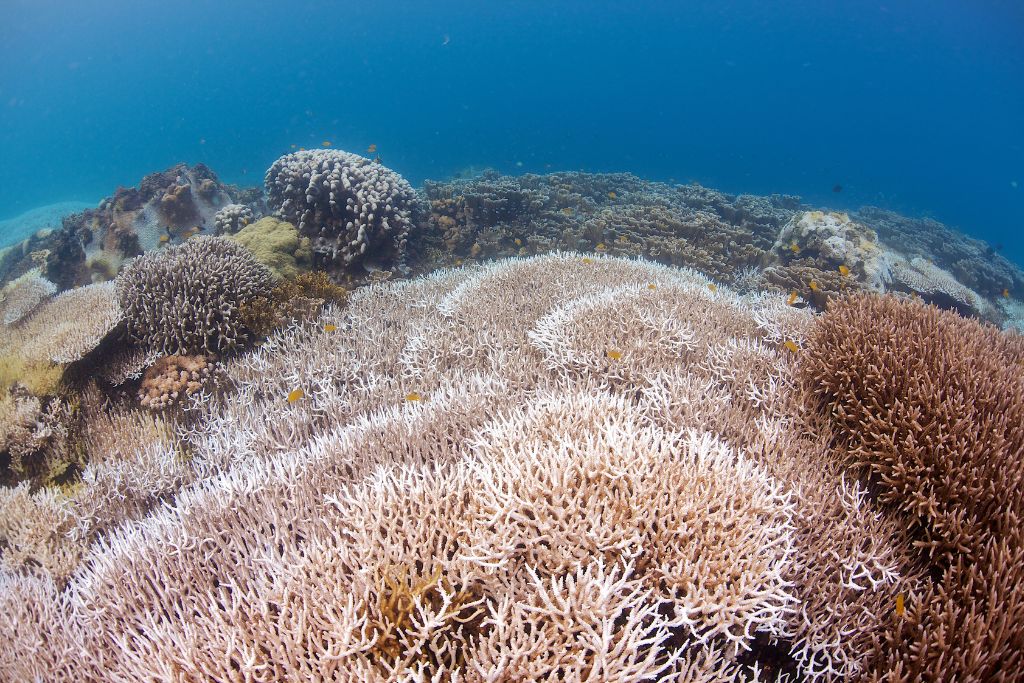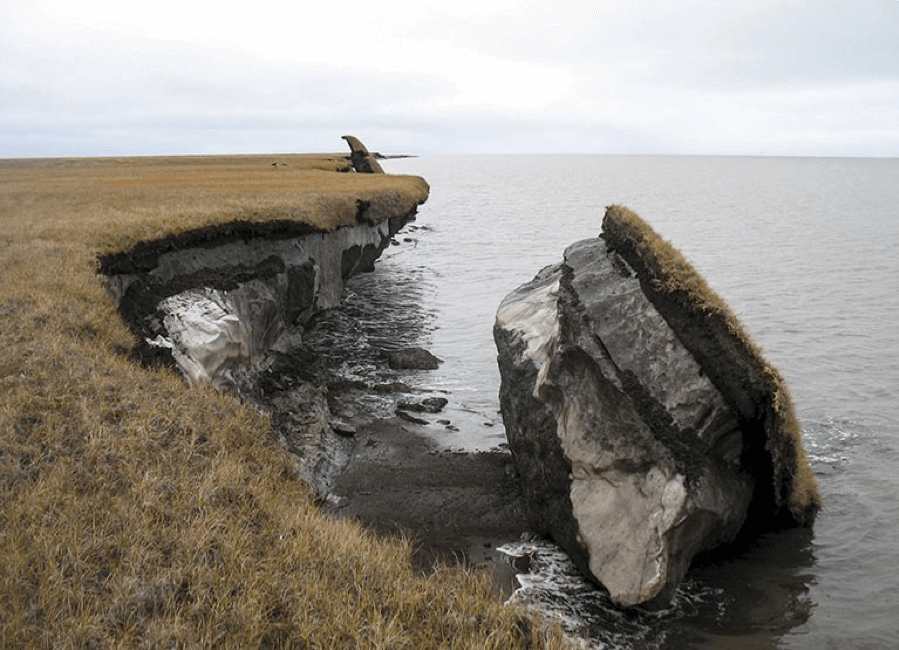The Earth has been evolving for over four billion years. Lands converge, oceans expand, and species emerge or go extinct. However, the climate crisis is sending these processes into another realm, going so far as to change the planet’s structure. What are the most substantial shifts the Earth is experiencing?
—
Effects on Landscapes
The most visible structural changes are within the land, with climbing temperatures leading to the disappearance of ice and permafrost, expanding deserts, and rising ocean levels.
Permafrost refers to a ground layer under the Earth’s surface that has been frozen for a minimum of two years and as much as hundreds of thousands of years. It is predominantly found in the Northern Hemisphere, where it constitutes around 25% of the ground. Key areas for permafrost are the Arctic regions of Siberia, Canada, Greenland and Alaska. Under pressure from rising global temperatures, permafrost is thawing.
The inability of the massive ice structures to stay balanced and stable jeopardizes the earth beneath, damaging roads, buildings, and pipes in urban areas and leading to land subsidence, which occurs when natural disasters and seismic activity continually force humans to reinforce the land. This ranges from soil nail systems to manually recharging groundwater reservoirs. Heavy traffic also affects landscapes. For instance, the US 340 route in Jefferson County, West Virginia, a primary route with 24,500 vehicles traveling daily, recently underwent a stabilization project to protect it from hazardous rockfall activity.
Deserts are also seeing more extreme temperatures and low humidity levels. These changes cause deserts to expand, making previously temperate and even wet regions more arid, a phenomenon known as desertification. The scale of the problem has been questioned for decades, with estimates of degraded areas ranging between 15-60 million kilometers.
However, the most publicized impact of climate change is sea level rise. Though this impacts aquatic ecosystems, the side effects are felt along coastlines, too. Barrier islands and coastal urban areas feel hotter as the land softens under erosion and flash flooding. Along with longer, more intense hurricane seasons, some coastal communities may have difficulty recovering from the encroaching seas.
More on the topic: Explainer: What Is Causing Sea Level to Rise?
Impact on Oceans
The structure of the oceans is the most hostile and unpredictable it has ever been.
Acidification, which refers to a situation in which the water’s acidity (pH) decreases as the presence of carbon dioxide in the water increases, is the first sign of this.
Oceans are considered to be the main natural carbon sinks, absorbing approximately 25% of the carbon emitted into the atmosphere. Plankton, corals, fish, algae and other photosynthetic bacteria contribute to this extraction of carbon. However, elevated acidity, which marine plants and animals are not used to, thins out populations or forces them to migrate.

Acidic conditions, elevated carbon dioxide levels, and warmer ocean temperatures also lead to coral bleaching. Reefs support 25% of marine species, making them critical ecosystems. The weaker they become, the worse they are at withstanding tidal waves on coastlines. Hurricanes, tsunamis and typhoons are far more powerful when coral is not blocking the land. Unfortunately, coasts will face even greater erosion and structural alterations as time progresses.
More on the topic: Scientists Confirm Fourth Global Coral Bleaching Event Across 53 Countries
Changes in Atmospheric Composition
Climate change is a combination of anthropogenic and natural factors. For instance, transportation and energy make up 21% and 34% of carbon emissions, respectively. Meanwhile, volcanic eruptions and solar radiation, also sources of CO2, are natural reactions taking place over thousands of years.
The greenhouse gas effect is the most recognizable and widely discussed contributor to global warming. Gasses like methane and carbon dioxide trap water vapor and heat inside the atmosphere, contributing to rising temperatures and more extreme weather events.
The greenhouse effect alters air quality from the atmosphere to the ground. Ground-level ozone comprises harmful nitrogen oxide and volatile organic compounds from cars, industrial and chemical plants, and refineries, which become activated in sunlight and heat. As ground-level ozone increases, it damages tree survivability, increases disease and pests, and hinders agricultural yields.

Additionally, small particulate matter (PM2.5) — aerosol pollutants measuring 2.5 microns or less – drifts into waterways worldwide. Aside from harming aquatic species and decreasing water quality, PM2.5 causes the tropopause to rise to 195 feet (59.4 meters) per decade – a side effect of the warming surface and thinning atmosphere.
The tropopause is separate from the stratopause and makes up the lowest two layers of the stratosphere. Changes to the tropopause are largely and negatively impactful, and they contribute to altering weather patterns and climate change effects.
Biodiversity Loss and Ecosystem Disruption
The planet would not be what it is without wildlife shaping it. Extinct and endangered species permanently change the habitats in which they once thrived. For example, the disappearance of pollinators can result in poor tree growth, while the loss of predators allows invasive species to take over and sap ecosystems of their nutrients.
Non-native species often bring disease and pests to a specific area. Others fight for habitat and resources with native species. The cane toad is an example of an invasive species wreaking havoc on habitats in Australia. Cane toads were imported from Hawaii to control beetles in sugarcane crops, yet they are dangerously poisonous to any creature attempting to eat it. Their presence has sharply declined populations of monitor lizards, an essential apex predator and scavenger for controlling other species’ populations in Queensland.
Species extinction and invasive species leave fragile ecosystems even more vulnerable to climate change, temporarily or permanently altering the landscape. This changes food chains and millennia-old evolutionary habits by encouraging new predatory and evasive behaviors, causing native species to struggle to survive. What’s more, invasive species are estimated to cost the global economy a staggering US$432 billion annually for the damage they create.
More on the topic: The Remarkable Benefits of Biodiversity
Earth’s Structural Integrity
Climate change is modifying the Earth, sea and sky, making their foundations more chaotic or less stable than the data suggests. The changes cause irreparable damage, which should inspire everyone toward optimistic climate action. Healing the planet’s building blocks is possible, but it is no easy task and cannot be achieved without significant investments, international collaboration, and urgent action.



















